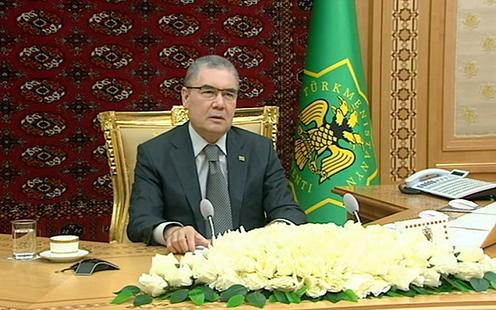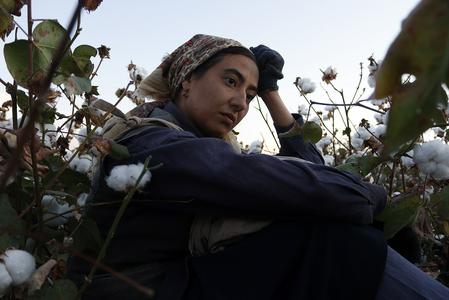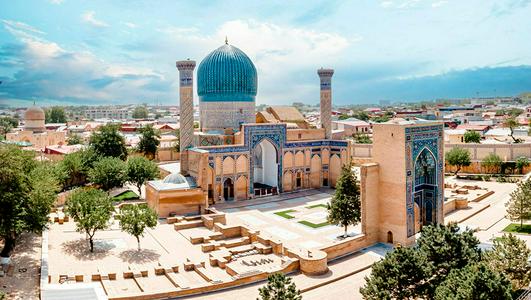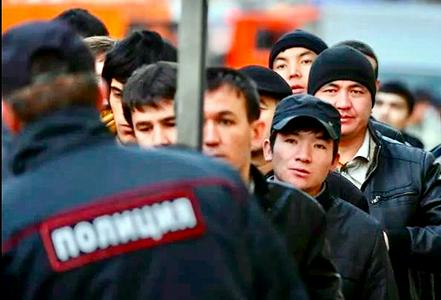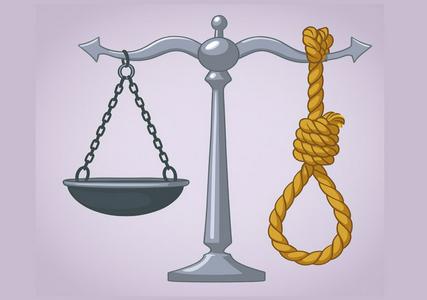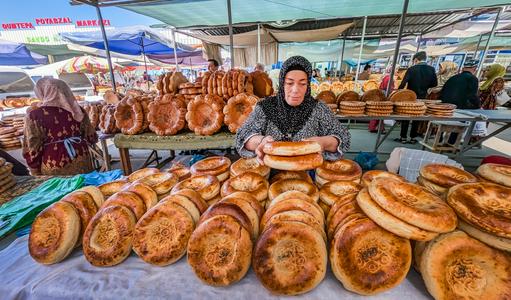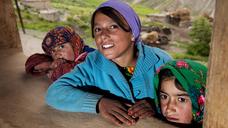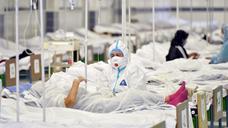During the course of a video call with World Health Organisation general director Tedros Adhanom Ghebreyesus and the director of the WHO’s European regional bureau, Hans Kluge, Turkmen president Gurbanguly Berdimuhamedov agreed to allow independent testing to be carried out in the country to check for the presence of COVID-19. The announcement was made by Dr. Kluge on his Facebook page.
According to Hans Kluge’s post, during the course of the online meeting the WHO representatives expressed serious concern about the increase in the number of COVID-19 negative pneumonia cases in Turkmenistan. As a result, they called on the Turkmen president to allow a WHO team to independently sample tests inside Turkmenistan and take them back to their own labs for analysis. Berdimuhamedov has apparently agreed to the proposal.
Official Turkmen news agency TDH offered a somewhat different analysis of the conversation, omitting any mention of independent testing or WHO concern. Instead, the article, under the title “Turkmenistan proposes new initiatives to protect against infectious diseases”, focused on Berdimuhamedov’s suggestions to the WHO to render the global fight against the coronavirus more effective. State TV channel Altyn Asyr showed Ghebreyesus dutifully jotting down notes of the Arkadag’s recommendations, a role normally reserved for sundry central and regional government officials.
The two WHO heads were unlikely to have been especially overwhelmed by Berdimuhamedov’s suggestions, which essentially amounted to calls for international scientific cooperation to find out more about the origins and pathology of the new coronavirus. The point of the president’s pontificating became a little clearer, though, when he stressed that “there is no consensus on the true genesis of the illnesses induced by the new type of virus”. “An example of this,” Berdimuhamedov continued, “is the lung inflammation of an unclear aetiology which is spreading rapidly in our region. Some argue that this illness is being caused by the new coronavirus. But, at the same time, a particularity characteristic of lung inflammation is uncovered by careful laboratory analysis and detailed study of data obtained through the use of modern medical technologies such as computer tomography.”
As obscure as this last sentence is, it seems clear that the Turkmen authorities are trying to create the maximum amount of leeway to continue denying that the surge of pneumonia cases reported on by independent media is necessarily linked to COVID-19. Other Central Asian countries, notably Kazakhstan and Kyrgyzstan, have reported large numbers of pneumonia cases with negative PCR results for COVID-19, but this has generally been attributed to faulty testing. Kyrgyzstan has unified its statistics for COVID-19 and presumed coronavirus pneumonia, while Kazakhstan continues to report separate data for the two conditions on its official coronavirus website.
The WHO has previously come in for critique after its mission to Turkmenistan at the start of last month failed to question the government’s official line that the coronavirus is yet to penetrate the country’s borders. At the time, independent Turkmen media reported that the health ministry was merely showing the experts a series of Potemkin hospitals, emptied of true coronavirus patients and full of new, unused equipment and artificially bolstered staff numbers.
Turkmen opposition activists living abroad have made a number of attempts to draw attention to the authorities’ cover-up of the spread of COVID-19 in Turkmenistan. On 29 July, a group of demonstrators in Washington laid a set of fake coffins outside of the WHO office in the US capital, shouting chants such as “The WHO is lying! Turkmens are dying!” and “Go back and take another look!”
